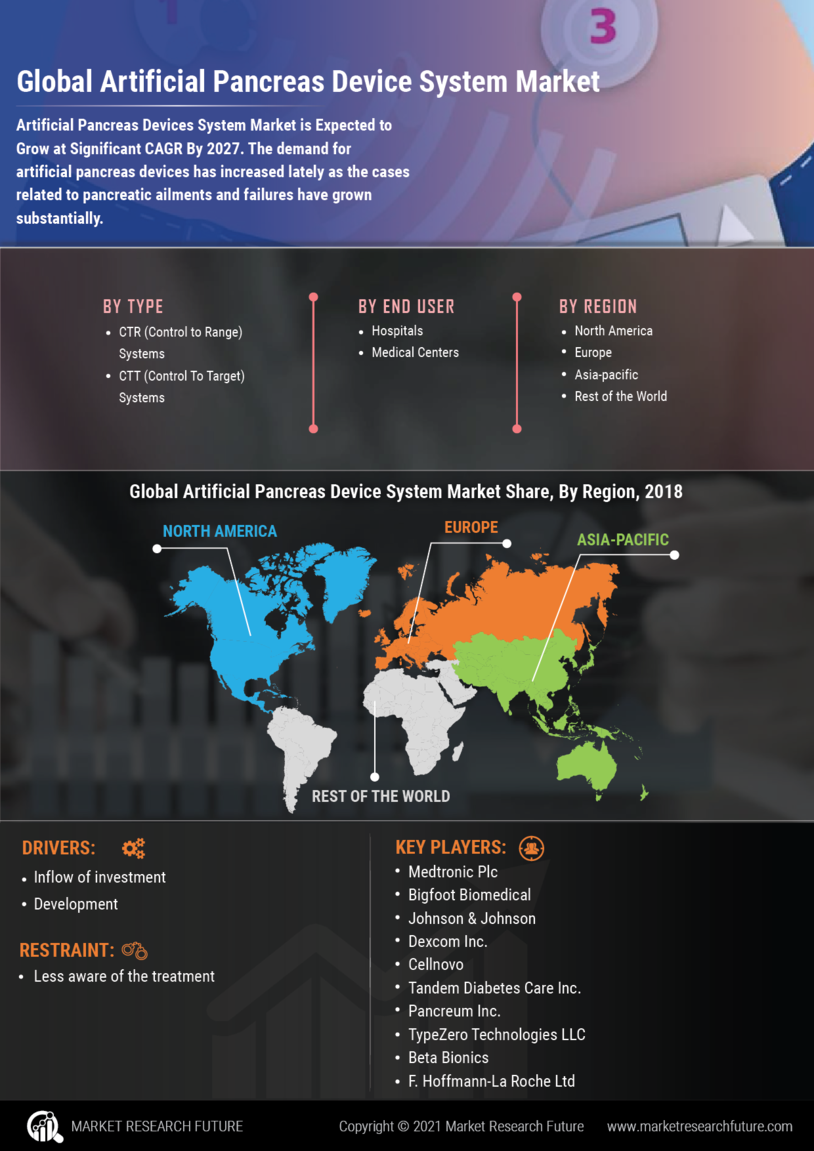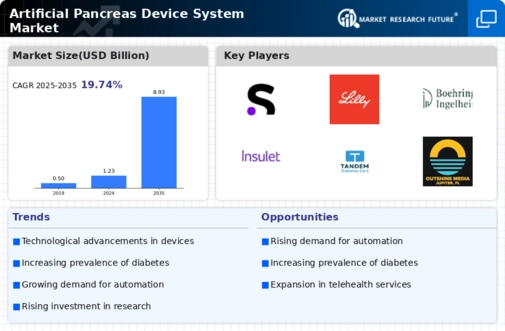Market Growth Projections
The Global Artificial Pancreas Device System Market Industry is poised for substantial growth, with projections indicating a market value of 1.23 USD Billion in 2024 and an anticipated increase to 8.93 USD Billion by 2035. This growth trajectory suggests a compound annual growth rate of 19.72% from 2025 to 2035, reflecting the increasing demand for advanced diabetes management solutions. The market dynamics are influenced by various factors, including technological advancements, rising diabetes prevalence, and increased investment in healthcare solutions. These projections underscore the potential for significant market expansion in the coming years.
Rising Prevalence of Diabetes
The increasing incidence of diabetes globally serves as a primary driver for the Global Artificial Pancreas Device System Market Industry. According to the World Health Organization, diabetes affects over 422 million people worldwide, a number that continues to rise. This growing patient population necessitates advanced management solutions, such as artificial pancreas devices, which can automate insulin delivery and improve glycemic control. The demand for these devices is expected to surge as healthcare providers seek effective ways to manage diabetes, thereby propelling the market's growth.
Growing Awareness and Education
Raising awareness about diabetes and its management is pivotal for the Global Artificial Pancreas Device System Market Industry. Educational initiatives aimed at both healthcare professionals and patients are increasing understanding of the benefits of artificial pancreas systems. As patients become more informed about their treatment options, the demand for advanced devices rises. This heightened awareness is likely to contribute to the market's growth, as patients actively seek out innovative solutions for diabetes management. Consequently, the market is expected to witness a compound annual growth rate of 19.72% from 2025 to 2035, reflecting the impact of education on consumer behavior.
Regulatory Support and Approvals
Regulatory bodies play a significant role in shaping the Global Artificial Pancreas Device System Market Industry. The approval of new devices by agencies such as the Food and Drug Administration facilitates market entry and boosts consumer confidence. Streamlined regulatory processes can expedite the availability of innovative artificial pancreas systems, making them accessible to a broader patient population. As more devices receive regulatory approval, the market is likely to expand, driven by increased adoption rates among healthcare providers and patients alike. This supportive regulatory environment is crucial for fostering innovation and ensuring the growth of the market.
Increased Investment in Diabetes Management
There is a noticeable uptick in investment directed towards diabetes management solutions, which is a crucial driver for the Global Artificial Pancreas Device System Market Industry. Governments and private sectors are allocating substantial funds to develop and enhance diabetes care technologies. This financial backing is essential for research and development, leading to more effective artificial pancreas systems. As a result, the market is projected to grow significantly, with an anticipated value of 8.93 USD Billion by 2035. This investment trend indicates a long-term commitment to improving diabetes management, thereby fostering market expansion.
Technological Advancements in Device Systems
Innovations in technology significantly influence the Global Artificial Pancreas Device System Market Industry. Recent advancements in sensor technology, algorithms, and connectivity have enhanced the functionality and reliability of artificial pancreas systems. For instance, the integration of continuous glucose monitoring with insulin delivery systems allows for real-time adjustments based on glucose levels. These technological improvements not only enhance patient outcomes but also increase the appeal of these devices among healthcare professionals. As technology continues to evolve, the market is likely to experience accelerated growth, with projections estimating a market value of 1.23 USD Billion in 2024.












